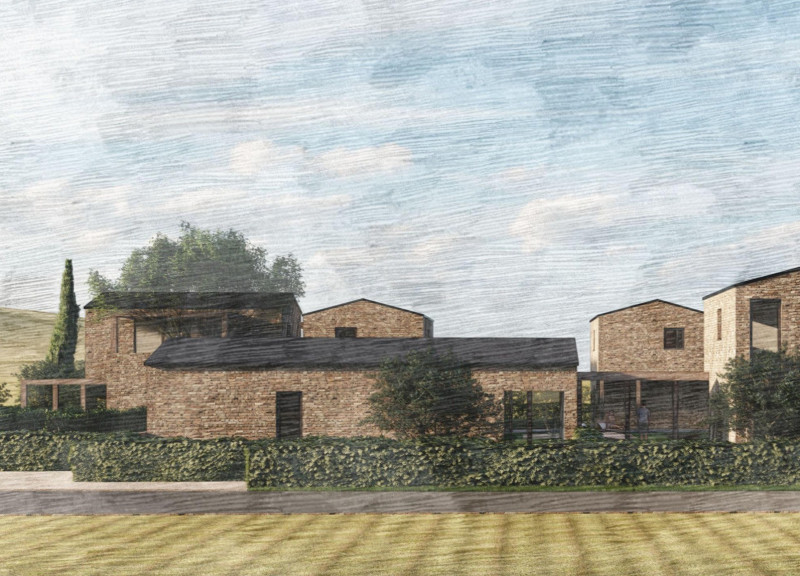5 key facts about this project
The guest homes serve both as accommodations and social gathering spaces, facilitating interactions among guests while promoting engagement with nature. Each unit features a thoughtful arrangement that encourages a community atmosphere without compromising individual privacy. The architectural approach reflects a commitment to sustainability, utilizing locally sourced materials and energy-efficient design principles.
Intelligent Arrangement of Spaces
The spatial organization of the guest homes revolves around a central courtyard designed for communal use, enhancing social interactions. Ground floor layouts prioritize accessibility and social connectivity, featuring open spaces that integrate living, dining, and kitchen areas. In contrast, the first floors provide private sleeping quarters with balconies, allowing guests to enjoy views of the exquisite countryside. This deliberate planning creates a balance between communal and private experiences, catering to a variety of guest preferences.
Sustainable Design Elements
A distinctive feature of the Tili Wine Guest Homes is the integration of sustainable design principles. The project utilizes local stone, wood, glass, and concrete, harmonizing with the natural surroundings while maintaining structural integrity and aesthetic appeal. Natural light is a key consideration; large windows and glass components are strategically placed to promote transparency and connection with the outdoor environment. The incorporation of landscaping elements, including gardens and water features, not only serves aesthetic purposes but also enhances biodiversity. This thoughtful approach results in a development that is environmentally responsible while providing a comfortable and engaging atmosphere for visitors.
Overall, the Tili Wine Guest Homes project stands as a practical example of contemporary architecture that respects its context and promotes a sustainable lifestyle. Those interested in the nuances of the design may explore the architectural plans, sections, and innovative ideas further to gain insights into its development. This project represents a notable contribution to the region's architectural landscape and exemplifies a balanced approach between hospitality and environmental stewardship.


























